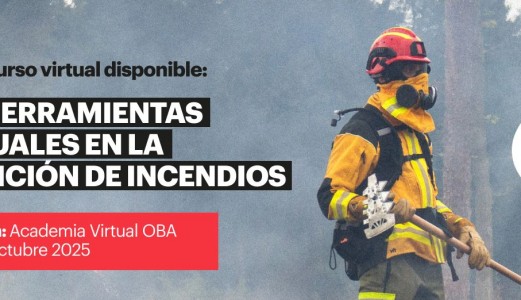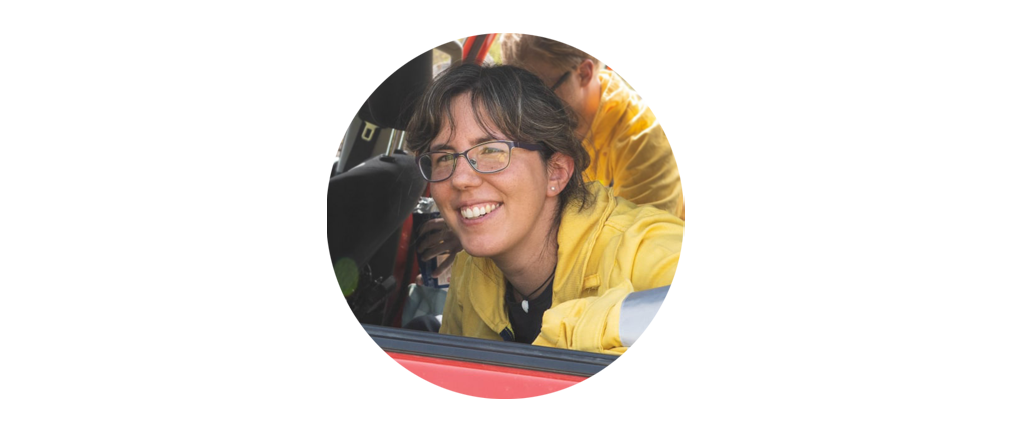
A researcher and analyst, Mercedes Bachfischer is a part of the team responsible for TEP (The Emergency Program) training. Over the past few days, she has been remotely supporting the technical team from Spain currently helping fight the simultaneous fires in Chile.
We talked with her today and would like to share some of what she had to say...
vft: Even though you are thousands of kilometers away from the actual situation, it’s interesting that you can still help out. How exactly have you been assisting?
M.B.: They’ve been there since just before these fires began because they were on an exchange, so we dove right in really from the very first minute. At first, on the first day when there was so much simultaneity, the urgent focus was on locating and mapping all the different fires. Having done that, we started trying to recreate the isochrones of each one, the temporal perimeters of spread, because we can learn a lot about what the fire wants and can do from that. Later, we moved into the details, identifying the active parts of the entire burn perimeter. After that, the team of analysts on the ground can identify areas that require special attention, draw potentials and set priorities.
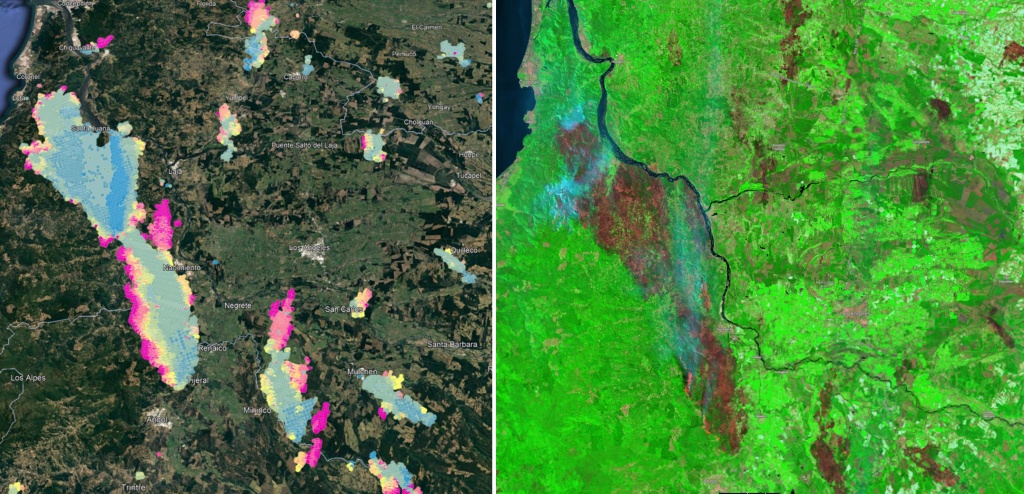
Technology nowadays offers great advantages. Just to give an example, having the real-time location of the equipment while, at the same time, processing satellite images with a high time scale, meaning the data is updated quite frequently, more than once, I am to guide them along the best path to reach the sites with the most activity at any given time.
We’re talking about hundreds of fires across more than 400 km of the country. That means multiple columns of smoke, and low visibility which makes it difficult, even sometimes within the fire itself, to find flame site. So, geographic information dumped into a platform that everyone can update and check at times like this is a key tool.
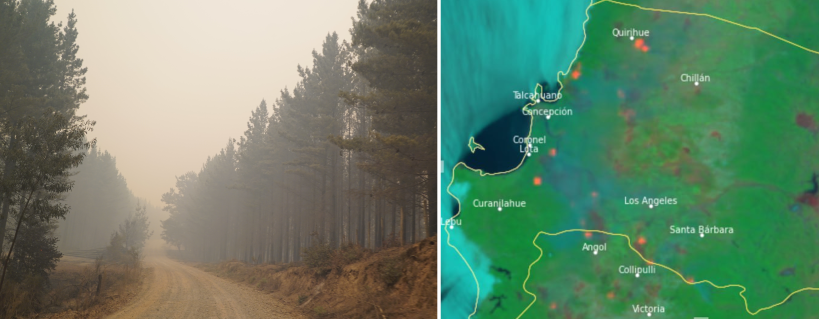
In short, we complement each other because, in some way, I end up being their eyes from above and they are mine in the actual fire as they send me meteorological data, images and videos where you can see the behavior of the fire and the whole situation.
People and forces facing these types of events, above all, need to maintain a strategic vision by using the technological tools available such as satellites and geographic information systems because, in the end, focusing on a single fire can make you lose that global perspective and rhythm of what’s happening. Having vision is about having the capacity to choose what is going to happen, and one very useful way to contribute to this capacity in an operation is by providing spoon-fed information like the position of the fire and fire growth and crossing all this information, along with the strategic and social capacity of a certain place on the planet. In Chile, this meant dividing the entire episode into four fire complexes where work is being done to limit them to these large containment lines, with the priority on reducing the impact on the many urbanized areas around all the fire fronts that were growing and are still growing, day after day.
vft: Let's talk a little about the situation before these fires. In terms of conditions, what was the region like? Was it possible to expect something like this could happen?
M.B.: Latin America in general is going through another major heat wave. It already happened last year, but it was more localized in the northeast; hence, you may recall the simultaneous fires in the province of Corrientes, in Argentina, forcing a fire emergency declaration after more than 800,000 hectares had been affected.
This time, there have been persistent high temperatures of around 30/40 degrees for days on end with very little moisture. And some regions are not even recovering at night. This definitely conditions the fuel out there; in other words, vegetation in all sizes and even some that’s very thick, which occurs when unfavorable conditions like these are maintained over time. The moisture content of this type of fuel, this thick fuel, is used to analyze the evolution of the fire season since it’s not sensitive to what happens on a day-to-day basis, meteorologically speaking, as occurs with finer fuel, which is even sensitive by the hour, but rather varies over longer periods. If you check the Fire Weather Index for this area, for February 3rd, a key day of this event, you would see how the anomaly was extreme.
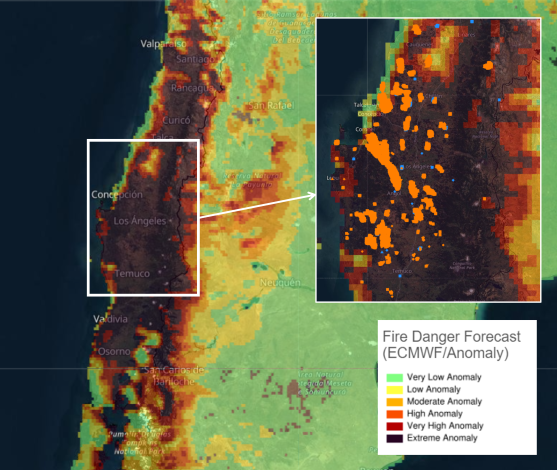
One interesting thing, yet also worrying, is that the local staff there mentions how, when observing this episode compared to the one in 2017, which was also a milestone in the history of fires worldwide, they see a certain tendency of more violent fires like those seen in recent days moving towards higher latitudes, and we’re talking about regions where this was not even conceivable before due to the climate.
vft: And as far as the fires themselves, what would you highlight from this episode? At first you mentioned the simultaneity and the number of active fires at the same time...
M.B.: Yes, simultaneity is a complex issue because it can cause the entire extinction system to collapse. The resources are finite, the extensions are very large, you can’t cover all the fires and, therefore, there’s no other way to analyze the situation, determine potentials, the priorities of action, and define the resolution scenario or the strategy for each one.
As for the fires themselves, the region is affected by dry Puelche winds, which are winds influenced by the Foehn effect from the Andes. Essentially it’s a phenomenon that occurs when an air mass rises due to some kind of obstacle perpendicular to its path; in this case, the mountain range. It cools down, the moisture condenses and then, the lee descends at great speed, gaining in temperature yet remaining dry. This makes it even easier for fuels to burn and, of course, for fire to more easily spread. On the other hand, during the night, some fires managed to establish a convective column and double in surface in just a short time. But the most violent fire, the Angol fire, was seen on Friday night, on February 3rd. After pyroconvection, it managed to grow at a rate of 7000 hectares an hour and ended up meeting up with the Santa Ana Fire. It had traveled 27 kilometers in just a few hours and that’s a lot.
vft: And, of course, burning everything along the way...
M.B.: And you can’t ignore the social aspect of all this. Everyone saw images and videos of the fires inside the neighborhoods, burning homes, and all the post-fire destruction. The deaths and wounded estimated to date is also public knowledge. The impacts on the interphase areas force you to have to manage many other aspects during the emergency which are not considered simply when vegetation is burning. This is a whole other world.
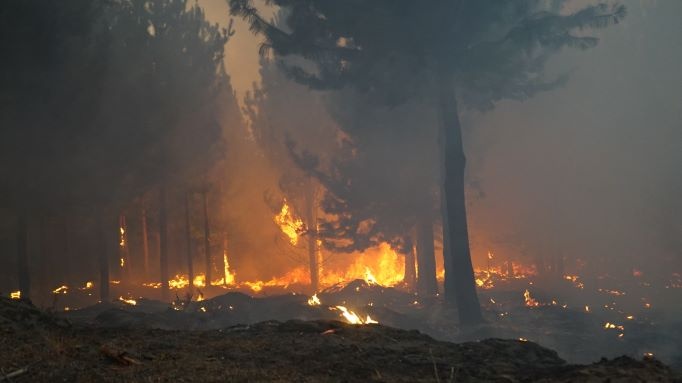
vft: From your perspective as a researcher who at the same time collaborates with others during fire emergencies in different parts of the world, what changes do you think are necessary, if any?
M.B.: The situation is clearly changing. Latin America used to be a spectator of all the major fires burning in the northern hemisphere, but that’s no longer true. In recent years we have seen major fires such as Las Máquinas and Agua Fría, in Chile, in 2017 and 2020; La Pampa, Las Golondrinas, Corrientes and Lago Martin, in Argentina, in 2018, 2021 and the last two in 2022; and the Roboré fires in Bolivia in 2019 and 2021. They’re all worth remembering because lessons are always learned. So, aware of this reality that is no longer alien to any of us, it’s important to be proactive and change for the better. Changing the way we manage territory and our societies during these emergencies, but also the way we think about fires, prioritize and make decisions as to the best way to work from an extinguishing point of view. Traditional methods worked for individual fires with speeds and intensities that barely exceeded certain thresholds but, considering this new change, we must also evolve.
vft: Thank you for your time, Mercedes, and for giving us a little context with regard to this episode and shedding a little light for us on your interesting role in this emergency.





